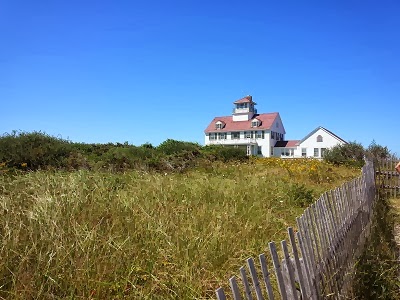Autumn on Cape Cod is somewhat dull compared to the celebration of hardwoods in mainland New England. Pitch Pine and late-turning oaks dominate the forests here. The shore of Cliff Pond in Nickerson State Park shows little color in late October but the crescent beach is as appealing as ever. My goal is to go for a dip some October, not this year though. I forgot my bathing suit today (luckily).
 |
| Cliff Pond - Nickerson State Park |
If one searches the shore of the big pond, some reds can be found.
 |
| Cliff Pond - Nickerson State Park |
The small side ponds seem to show more autumn life.
 |
| small pond adjacent to north edge of Cliff Pond |
Another small pond adjacent to Cliff exhibits a host of lily pads.
 |
| small pond adjacent to west end of Cliff Pond |
Mallards are well-camouflaged in one corner. Close examination will show two females just behind the green-headed males.
 |
| Mallards among the lily pads (look for four) |
Snow Pond in Truro shows more lively oranges and reds. This pond is one of several which are protected within the National Seashore. I attended a talk there yesterday to hear some good news from a Park Ranger. Long-term monitoring shows that the water quality in this pond, as well as most of the ponds within Seashore jurisdiction, has not worsened over the past several decades. The bad news is that almost all the other ponds on the Cape are being contaminated by runoff from septic systems and are slowly going eutrophic. The situation is further deteriorating because many camps at waters edge are being remodeled into large homes and residents are staying to enjoy the cape for more months of the year, hence more nutrients seep into the ponds. Are we loving our Cape to death? Thankfully, the National Seashore was created in the early sixties to preserve large tracts.
 |
| Snow Pond in Truro |
The marshes offer a different feel to fall on the Cape, no less beautiful than the ponds.
 |
| Marsh near head of Herring River in Harwich |
The rusts and yellows of the marsh grasses contrast pleasantly with the blue and white of the clouded sky.
 |
| Marsh near Wing Island in Brewster |
The heath near the cool Atlantic has a more somber look this time of year. Within the National Seashore a few homes are grandfathered in, like this lonely abode on a lofty perch at ocean's edge. Since the bluff is eroding a couple of feet each year, the owners will have to move soon or face crumbling foundations.
 |
| House atop bluff at Ballson Beach in Truro |
The azure ocean complements the blue of the sky at the height of the bluff. The colors on the outer Cape are magical even without maple scarlet.
 |
| Heath on edge of bluff north of Ballston Beach |


















